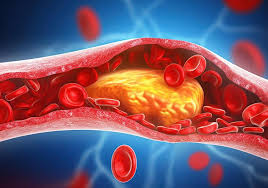Unraveling Time: The New Frontiers in Human Longevity
In the small, sunlit lab that smells faintly of cedar and disinfectant, Dr. Helena Barron peers into the microscopic world where human cells dance the slow ballet of aging. Here, beneath the whirr of machines that sound almost like distant lawnmowers on a Sunday morning, a revolution brews—a revolution that might just allow us to outdance time itself.
The Genetic Keys to a Longer Life
The science of biogerontology isn’t the stuff of chilly, clinical corridors; it’s warm with the promise of extended youth and the potential of adding quality years to our lives. It whispers secrets, hidden in the double helix of our DNA, waiting to be unlocked. We’ve long known that certain genes play critical roles in the aging process. Researchers like Dr. Barron are on a quest to tweak these genetic dials.
Take, for instance, the gene FOXO3, a star in the longevity research. People with certain variations of this gene are more likely to become centenarians. Imagine, genes as a fountain of youth, nestled within our very cells! By understanding these genetic markers, scientists aim to develop therapies that could mimic these beneficial effects, offering everyone a shot at a longer, healthier life.
Dietary Doctrines: Eating Your Way to 110
Our daily bread holds more than sustenance—it holds the secret to prolonged vitality. There’s a tiny island in Greece called Ikaria, a place where the elderly seem to forget to age. The Ikarians’ diet, rich in olive oil, grains, fish, and a cornucopia of fruits and vegetables, is more than a menu—it’s a recipe for longevity.
Emerging research suggests that diets mimicking caloric restriction can significantly extend life in small organisms, such as yeast, and even in higher mammals. This isn’t about starving yourself but adopting a diet that is less about quantity and more about quality. High nutrition, low calorie—this could be the simple mantra of the fountain of youth.
The Pill of Perpetual Youth
Pharmaceutical titans are not just in the business of dealing with diseases; they are in the race against time. Drugs like Rapamycin, initially used to prevent organ transplant rejection, have shown promise in extending the lifespan of mice by mimicking the effects of caloric restriction—without the need to forego that occasional slice of birthday cake.
In the high-stakes gamble of pharmaceuticals, where every small pill could be the next big breakthrough, researchers tread a path filled with both hope and caution. After all, extending life is not just about adding years to life but adding life to those years.
The Emotional Echoes of Aging
As we chase the dream of longer life, it’s essential to remember the human stories at the heart of this quest. Take the example of Clara, a sprightly 102-year-old who swims every morning and reads voraciously by night. Her secret? “A little wine, a lot of reading, and even more laughing,” she says with a wink.
It’s not just about the science; it’s about the smiles, the tears, the shared memories. Aging gracefully isn’t just a scientific puzzle; it’s an art form—perhaps one that could be captured in bold ai art people, a testament to the vibrant lives of those who have walked the earth for over a century.
The Visual Generation: Understanding Through AI
In a world where seeing is believing, the advancements in technology offer us unprecedented insights into the aging process. Through ai men images, researchers can now visualize how we age across different environments and genetics, providing a clearer picture than ever before of the aging landscape.
The Road Ahead
As we stand on the brink of these tremendous scientific advancements, it’s clear that the path to longevity is woven with more than just the threads of science; it is deeply human, tied to our dreams, our fears, and our hopes. It is a journey not just to extend life but to enhance the lives we have, filled with moments that truly matter.
As Dr. Barron says, looking up from her microscope, “We’re not just adding days to the calendar; we’re adding life to those days.”
In this quest, the fusion of nature and knowledge hints at a future where the twilight years could be just as vibrant and rich as the dawn of life. Where every heartbeat isn’t just a tick of the clock but a drumbeat in a long, joyful dance. In biogerontology, we find not the shadow of death, but the light of prolonged day. And perhaps, in this light, we see not the end, but the beginning of a beautiful, enduring dawn.







